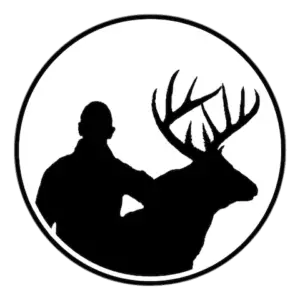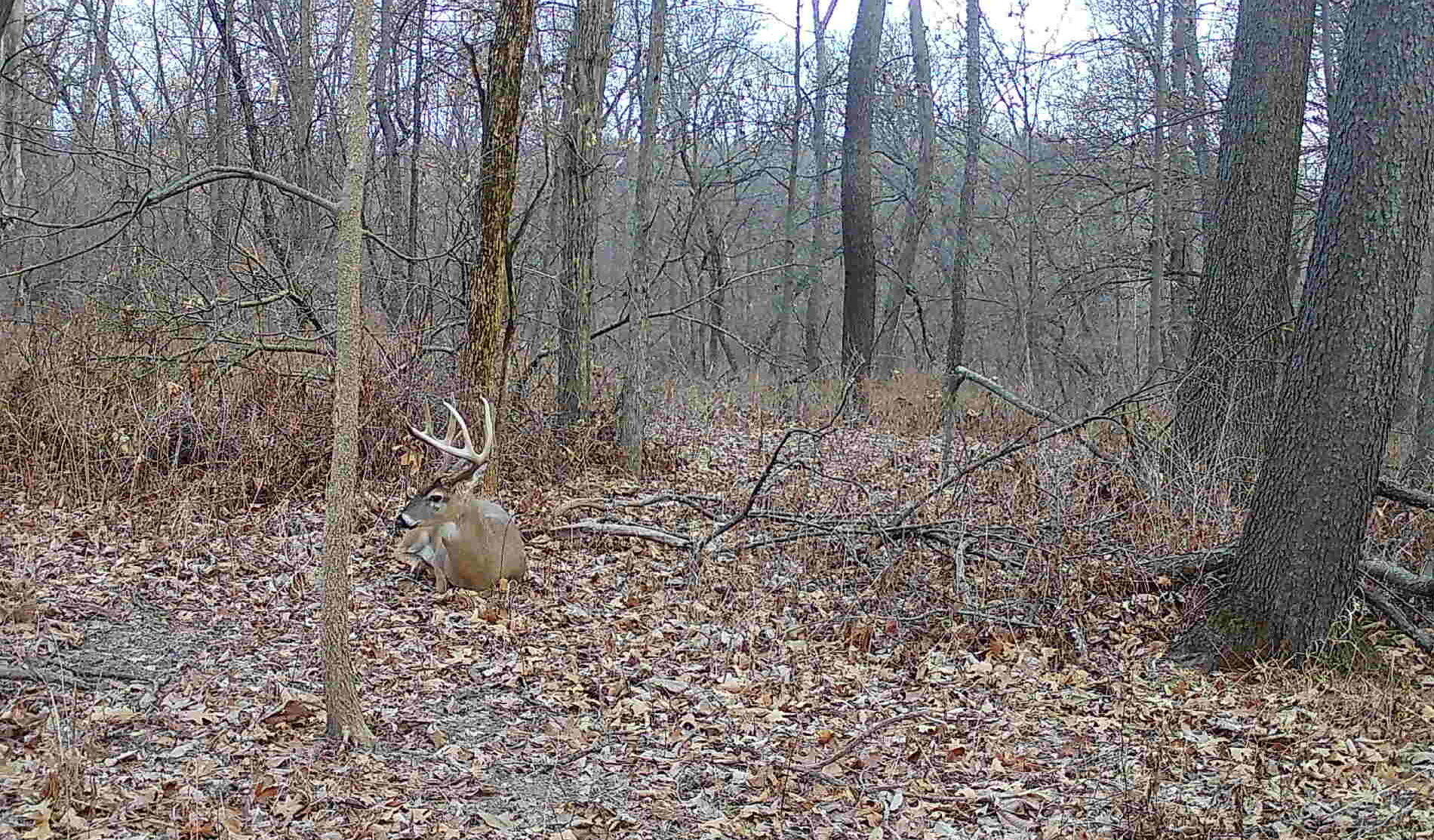Most deer hunters know that a good bedding area usually correlates to good hunting. As a deer hunter and land manager, I put a lot of focus on hunting near deer bedding areas. I’m trying to shoot the biggest buck I can, and I know that my odds of seeing a mature buck is much better within cover than in an open field like a food plot. Are you trying to learn what to look for in a good bedding area to find deer and mature bucks? Maybe you are wanting to create the best bedding areas possible on the lands that you hunt. Either way, you have come to the right place.
A good bedding area will provide deer with a sense of security so that they can escape and hide from predators. Bedding should also be supported by a variety of foods and a water source within the bedding area itself or close to it. In ideal situations, bedding areas will be large enough to hold both bucks and does while being small enough so that a hunter can effectively hunt the deer using that bedding area.
Bedding areas are not all created equal and every individual property is unique. As hunters and landowners, we try to find or create bedding areas that deer prefer to spend most of their time so that we have the best odds of seeing success in the field. A good bedding area will have each of the traits listed below. If you can find or create a bedding area that checks the box off for each of these traits, your hunting opportunities will improve significantly.
9 traits of a good bedding area
1. Location, location, location
I wrote a whole article about where to put deer bedding areas when designing a deer property. Unfortunately there is no universal answer for where to put a bedding area. For example, some properties should have them on a property line and other properties shouldn’t. Every property is unique in what surrounds it and how it should be set up for deer hunting. Make sure to click that link and read that article before deciding where to put your bedding area.
Location is also important for hunters who don’t have the ability to make habitat improvements on the lands where they hunt. When looking for a good bedding area, look at the bigger picture and understand why one bedding area might be better than the next. In order to decipher which bedding areas are better than others, use the rest of the traits below to help you determine if deer prefer one bedding area over another.
2. Human intrusion is at a minimum
In most cases, bedding areas that have less human intrusion than other bedding areas within a deer’s home range is going to be visited more frequently by deer. Deer are a prey species with a great ability at detecting danger. They will do whatever they need to do in order to stay safe. That might mean relocating to safer bedding areas or only coming out at night when human pressure is high.
As hunters and landowners, we need know how to make deer feel safe. When deer feel safe it will increase the odds of seeing them move around during daylight hours. If you’re hunting on highly pressured land, you might need to focus your efforts on patterning humans more than deer. If you can discover places where humans aren’t pressuring deer, or pressuring them less frequently, you will have better odds of success hunting those locations.
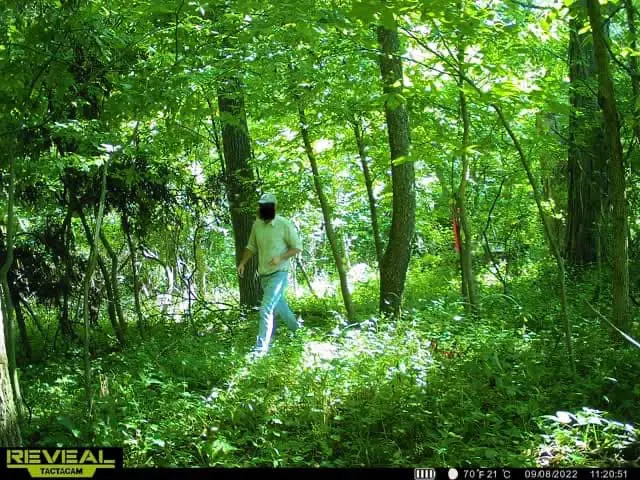
3. Supported by food
Deer will gravitate to area’s that offer the best food at particular times of year. Sometimes bedding areas have lots of food for deer within them, and some bedding areas offer no food at all. For example, a switchgrass field can be an excellent bedroom for deer, but it’s not preferred deer food. Deer can bed all day in a switchgrass field but they will eventually need to leave that field to eat somewhere else. In a situation like this you will want to have a food source nearby to keep deer using the bedding area on a regular basis. Additionally, a variety of food sources will help prevent deer from relocating to new bedding areas since different foods peak in attraction at different times throughout the season.
As I mentioned before, some bedding areas offer lots of food for deer to eat within the bedding area itself. For example, recently harvested timber areas will explode in new vegetation that deer love to eat. In this example, a deer could bed and feed in the same bedding area for a long time before they would ever need to leave it. This is all circumstantial, but the point is a good bedding area will have preferred food sources close to it in order to keep the deer consistently using it.
4. Proximity to water
Deer get most of the water they need for survival from the foods that they eat. However, that doesn’t mean they don’t enjoy taking a drink of water. Deer can also crave a drink of water. If deer have been bedded all day during warm and dry conditions, or if they have a fever, they will want to drink water to cool down their body temperatures. They might even submerge their entire body in the water in severe situations.
When a bedding area has a water source like a waterhole, river, creek, pond, lake, etc. it enhances a deer’s attraction to the area. Don’t give deer a reason to leave an area and they will be more likely to stay close to the bedding area. If you don’t have a water source within or near your bedding area then add a waterhole in a strategic location where you can hunt over it.
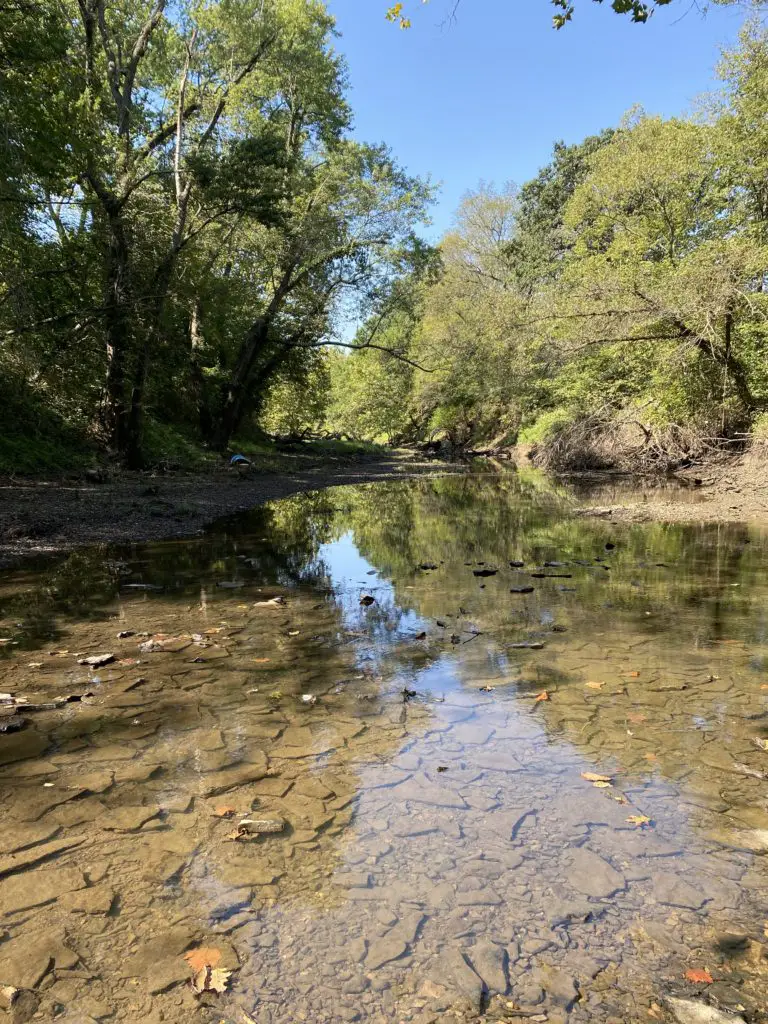
5. Easy to hide from predators
If deer cannot use a bedding area to hide and escape from predators then it’s not a good bedding area. A good bedding area will be thick enough to hide deer from predators and also reduce the social pressure that deer put on each other.
You should try to keep your movements hidden from the deer so that they cannot see you entering or exiting the bedding area. If you aren’t able to manipulate the habitat or install a screen where you hunt, you might need to get creative on how, when, and where to access the bedding area. If you can install a screen to hide your movements, that will reduce the likelihood of deer getting spooked out of the bedding are. You can click this link to read my article and learn how to avoid making mistakes when installing screens.
6. Large enough to support both bucks and does
A good bedding area will be large enough to hold both bucks and does. There is no minimum acreage for how big a deer bedding area should be. However, there are clues that can help us understand when deer bedding areas are too small or too big. The hard part is trying to figure that out. Mature bucks have the reputation of keeping their distance from does outside of the breeding season, but they normally have no problem bedding in the same bedrooms with a little distance between them. On the flip side, bucks during the rut will be looking for does to breed, so a good bedroom will offer enough room for both bucks and does to coexist at all times of year.
7. Small enough that you can hunt it effectively
When a bedding area is very large with food everywhere, it can be extremely hard to learn how deer use the property in a predictable way. This can make hunting extremely challenging. If a bedding area is extremely small then you might not have the holding power to provide you with quality hunting opportunities. However, there are situations when small patches of cover can be used by a specific buck. So I don’t want to tell you not to hunt a small bedding area.
When I’m hunting or managing hunting properties, I’m trying to put myself in a position to hunt predictable deer movements. Unfortunately, there are a lot of factors that influence this. For example, how many bedding areas there are available to deer, how much food is in the area, how small/big the deer population is, how much hunting pressure is in the area, and the list goes on. To hunt and create predictable movements, your odds will improve over time as you observe and make adjustments to your plan and strategy.
Have you ever been told that you shouldn’t hunt a bedding area or a deer sanctuary? Many guys believe that you should never hunt in a sanctuary because you will ruin your chances at killing a big buck. However, I think a little bit different. In fact, I think that hunting a sanctuary bedding area will increase your odds of tagging more mature bucks than if you didn’t. If you want to learn more about my strategies for accessing a deer bedding area, read this article: Should you enter a deer sanctuary.
8. Different from the rest of the neighborhood
A good bedding area will be different from every other bedding area in the neighborhood. For example, if there are a lot of wooded bedding areas but very few switchgrass fields, the switchgrass field might offer something different that the deer prefer in that area. Also, some wooded bedding areas might have more mature timber than others which can offer less native browse for deer than woods with lots of sunlight hitting the forest floor. Find those unique bedding areas that are different from the majority of bedding areas on the landscape and focus on hunting there.
A bedding area can also be different just by the amount of human pressure that it sees or food that it has close by. Learn to recognize these differences to use that information to your advantage.
If you are a landowner, create bedding areas that are different from your neighbors and make sure your bedding areas fit in with the rest of your habitat improvements. Most people aren’t managing their properties for deer hunting. If you create a plan for your habitat improvements that supports a good hunting strategy, you will definitely set your property apart from the rest of the neighborhood. Click the link to learn more about how to set your property apart from your neighbors.
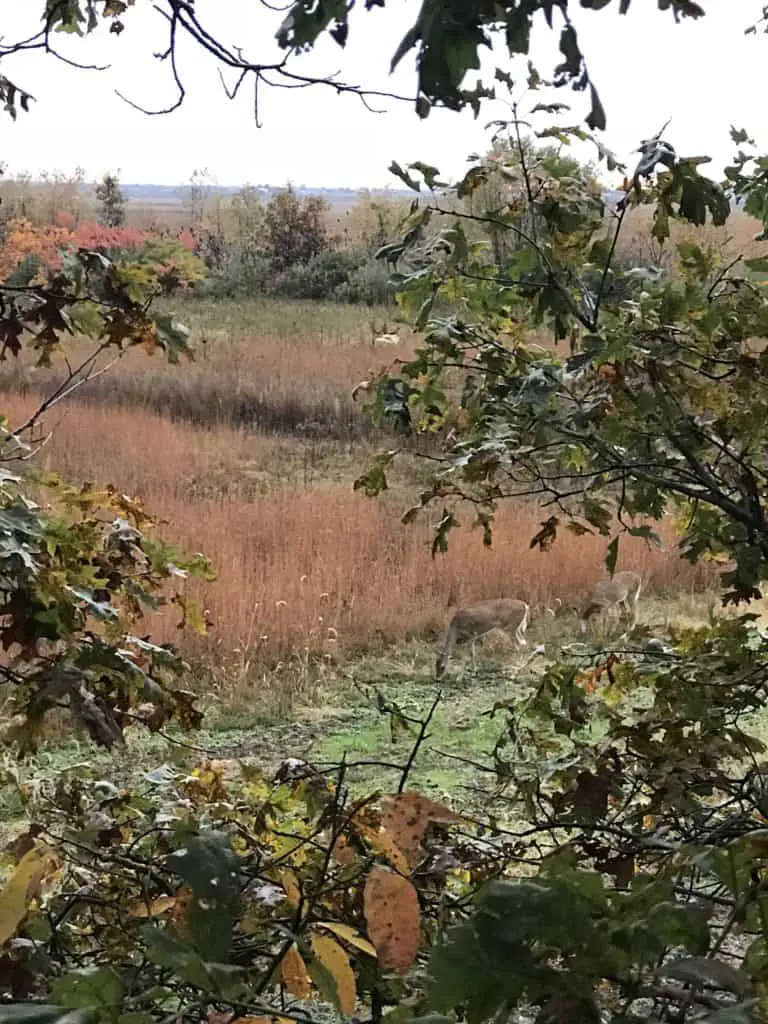
9. Thermal cover
As summer turns to fall, most states are opening up their hunting seasons for deer hunting. The temperatures are getting colder as the rut approaches, and deer are seeking refuge in bedding areas where they can regulate their body temperatures. A good bedding area will offer thermal cover to make it easier for deer to regulate their body temperature during hunting season and winter months.
When deer are cold, they want exposure to direct sunlight and an escape from harsh winds to conserve their energy. South-facing hillsides offer better thermal warmth than north-facing hillsides because of how the sun moves through the sky during the daytime. Therefore, hunt bedding areas and create them in specific locations that offer deer a comfortable place to bed and stay warm.
Conclusion
Recognizing a good bedding area, or creating them, is going to give you an upper hand if you’re trying to kill big bucks. Once you know all of the traits of a good bedding area and you learn how to recognize them, you’re ready to go hunting. The hard part is recognizing the signs and clues that deer and other people leave behind and use that information to your advantage. The more clues that you learn will help you make adjustments to your hunting strategy and habitat improvements. Making these adjustments will help you increase your odds of achieving your whitetail and land management dreams. Good luck!
